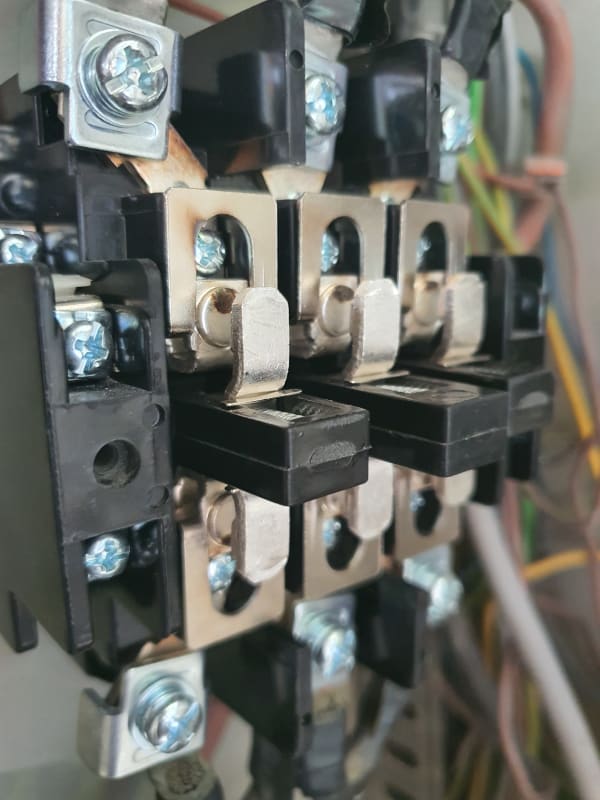Hello
I have a 45 kw induction motor with starting method using star delta method. The star and delta contactors of the motor have been for several occasions got burnt. However, I haven't figured out why the contactors got burnt. The FLA is 93 A, and the contactors have a rating current of 105 A, breaking current of 930 A, and making current of 1050 A. I figured that it was probably caused by the star and delta contactors being closed at the same time during the transition. Hence, I added 1.6 seconds after the star contactor opened for the delta contactor to close. However, it got burnt again.
And then I realized that because the current that flows through the star and delta contactor also flows through the main contactor, thus, if the star and delta contactors got welded, then there should be three contactors that got burnt, not just 2. Does anyone know what seems to be the problem that causes the star and delta contactors to get burnt but the main contactor doe not? Thank You
P. S.
The timer for the star contactor in the close position is 4 seconds.
I have a 45 kw induction motor with starting method using star delta method. The star and delta contactors of the motor have been for several occasions got burnt. However, I haven't figured out why the contactors got burnt. The FLA is 93 A, and the contactors have a rating current of 105 A, breaking current of 930 A, and making current of 1050 A. I figured that it was probably caused by the star and delta contactors being closed at the same time during the transition. Hence, I added 1.6 seconds after the star contactor opened for the delta contactor to close. However, it got burnt again.
And then I realized that because the current that flows through the star and delta contactor also flows through the main contactor, thus, if the star and delta contactors got welded, then there should be three contactors that got burnt, not just 2. Does anyone know what seems to be the problem that causes the star and delta contactors to get burnt but the main contactor doe not? Thank You
P. S.
The timer for the star contactor in the close position is 4 seconds.

